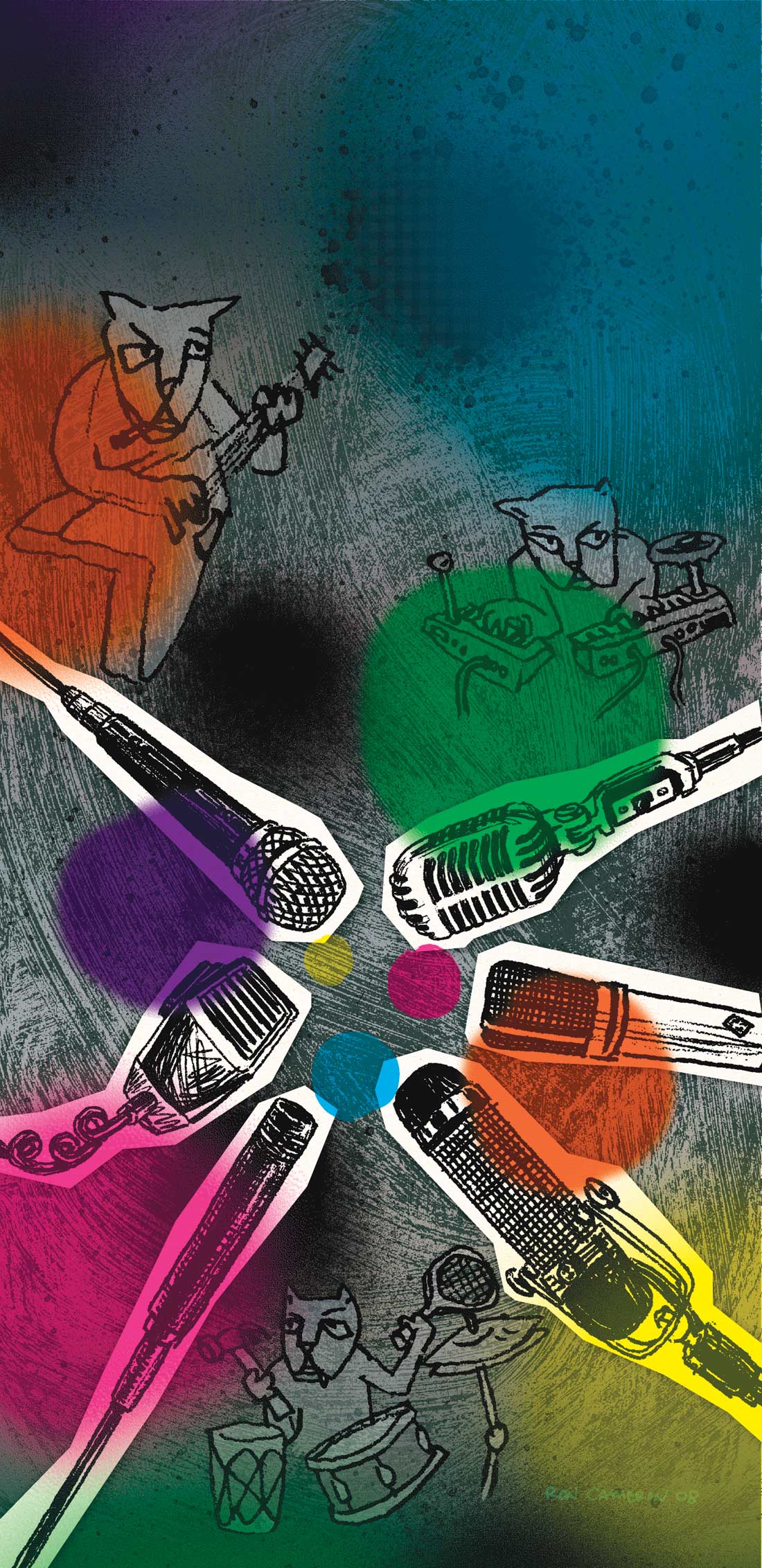Universal Audio more or less set the standard for hardware plug-in processors with their UAD-1 series. They were one of the first to release a product of this type and currently have one of the deepest libraries of plug-ins, including quite a few officially-licensed emulations of gear from Neve, Roland, and Moog. We've reviewed the UAD-1 family several times over the years, most recently with Neil Mclellan's opinion of the UAD-Xpander (Tape Op #63). Now, UA has seriously upped the ante with the UAD-2 series, which utilizes the brand-new Analog Devices 21369 SHARC floating-point DSP chip (unlike other popular platforms that rely on the older Freescale/Motorola 56k fixed-point DSP). UA worked closely with AD to develop the UAD-2 almost in parallel with the AD 21369. What does this mean to us, the end-users? Well, a UAD-2 card with one SHARC chip (the UAD-2 Solo) has approximately 2.5 times the processing power of a UAD-1 card for a street price of around $500. The UAD-2 also comes in Duo and Quad versions with two or four SHARC chips and five to ten times the processing power of the UAD-1 card. Those of us who use UAD-1 plug-ins will obviously be stoked for the extra horsepower. One of my favorite UAD plug-ins is the Neve 33609 Bus Compressor, but one instance of the full version (there is also the less processor-intensive 33609SE) uses almost 70% of my UAD-1 card! I suspect that as software development ultimately marches forward, there will be some amazing-sounding plug-ins that will require more DSP resources than a legacy UAD-1 card can handle. I'm not an in-the-box mixer as I still use an analog console and outboard gear alongside my plug-ins, but if you live in-the-box, a UAD-2 Quad will allow you to run 128 mono instances of the Neve 88RS channel strip at 44.1 kHz (with either the Gate/Exp or Comp/Limit enabled and LoadLock off).
On to some details. The UAD-2 is only available in a PCIe version. This is because the PCIe bus is almost twice as fast as PCI and five times faster than FireWire 400 or USB 2.0, so the decision was made to look to the future over supporting the past. But, UA isn't abandoning their existing users. The UAD-1 card family is still supported; the new version 5 software can address up to four UAD-1 and four UAD-2 cards simultaneously. Version 5 works with VST and AU hosts on Mac OS X 10.4+, and VST on Win XP/Vista. Unfortunately, Pro Tools users will need to stick to the UAD-1 platform for a little bit longer, but RTAS support is already in beta and expected to be in full release by the end of the year. Version 5's control panel is a big step up as well with a more advanced GUI, metering, and integrated help and support. There is also a new LiveTrack low-latency mode so you can track with plug-ins enabled.
Existing UAD-1 owners who buy a UAD-2 will need to crossgrade their plug-ins to new versions that work with both cards. Crossgrades are free if you purchase a UAD-2 before the end of the year. Starting in 2009, a crossgrade fee of $25 per plug-in will be charged, up to a $250 maximum. UAD-1 owners who purchase a UAD-2 will also get vouchers of $100 to $250, which they can put toward new plug-ins (or crossgrades after this year). Once all your plug-ins are crossgraded, sessions can move freely between computers and systems with any configuration of UAD-1 and 2 cards, as long as there's enough DSP available. A few of the most recent plug-ins haven't been ported to the UAD-2 yet (visit the UA website for a list) but will automatically map to available UAD-1 cards.
And finally, with the roll-out of the UAD-2, UA has announced even more cool collaborations with other great gear manufacturers. Recent releases include the Helios Type 69 EQ and the SPL Transient Designer, both of which we've been using at The Hangar on UAD-1 cards for a few months now, and every other week or so, one of the engineers here will tell me how the Transient Designer saved their mix session. (Unfortunately, TD hasn't yet been ported to UAD-2.) Coming soon are even more cool plug-ins: Empirical Labs FATSO Jr., Little Labs IBP, assorted Valley People devices, the EQ from Bruce Swedien's Harrison 4032C console, and a Moog Multimode Filter that's like a greatest-hits redesign of various Moog filters.
UA supplied us with a pre-release UAD-2 Quad card, and after a few hiccups because the authorization website wasn't yet available, the folks at UA (thanks Casey!) got us straightened out. As we are primarily Pro Tools in The Hangar, we installed the card into the Mac at Monsterlab Audio Mastering with AU plug-ins for Logic Pro 7 at 88.2 kHz. Except for the plug-ins not yet ported to the UAD-2, everything worked perfectly with the sonic quality we've come to expect from the UAD series. My Neve 33609 plug-in?? Sounded great as usual, but instead of taking up almost 70% of the card at 48 kHz, it only used 6% at 88.2 kHz. Nice. ($649-$2499 MSRP for various bundles; www.uaudio.com)
Tape Op is a bi-monthly magazine devoted to the art of record making.




_disp_horizontal_bw.jpg)